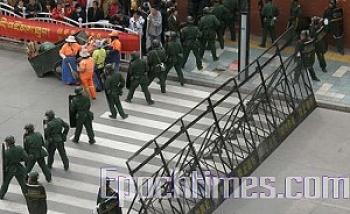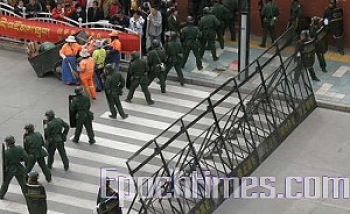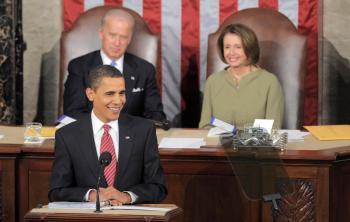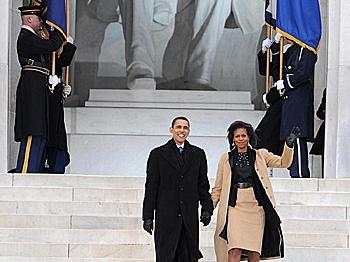Chinese authorities announced Tuesday they would be welcoming international tourism to Tibet, which has been all but completely inaccessible to foreign tourists and members of the press since violent protests broke out in March.
The state-run Xinhua news agency reported that international tourists would be able to travel to Tibet as of Wednesday, June 25, though the scope of the tourism is expected to remain limited.
The move to reopen the far-Western province is intended as a signal to the world that Tibet has returned to a state of normalcy in the wake of the Olympic torch relay in Lhasa. Yet if the extensive security checkpoints and apparent disappearance of monks are any indication, all is not well in the Tibetan capital.
During the Olympic torch relay, which passed through Lhasa for three hours on June 21, the city was reported to be under virtual lock-down. Foreign reporters allowed to visit the region were escorted through half a dozen security check-points, and the audience—brimming with Communist flags—appeared to be a hand-picked selection of predominantly Han Chinese.
Tibetan locals were largely kept away from the Torch’s route, and were told to stay in their homes and shutter their windows, according to media reports.
During the closing ceremony of the torch relay, Qin Yizhi, head of Lhasa’s Communist Party, declared, “We are convinced that the Beijing Olympic Games’ torch relay in Lhasa will further inflame the patriotic spirit of the people. We will certainly be able to totally smash the splittist schemes of the Dalai Lama clique”—an unusual choice of words given the communist regime’s previous decrying of human rights critics “politicizing” the games.
Yet even after the torch moved on, security in the capital remains tight. Police checkpoints are reportedly ubiquitous, checking and registering the identification cards that monks are required to carry.
With the increased security, Lhasa’s monks seem to have thinned dramatically in numbers. Reports from the foreign media allowed into the capital suggest they have been almost absent from Lhasa’s streets, and few remain at the Buddhist monasteries.
Reporting for Canada’s Globe and Mail, Geoffrey York reported that at Lhasa’s Sera monastery—the second-largest in Tibet—the usual 550 monks had disappeared from sight. Only about ten were left, giving terse answers to the media’s questions before being whisked away by security officers.
“We’ve received lots of reports of trainloads of monks being taken out of Tibet, off the plateau,” says Ben Carrdus, a senior researcher with the International Campaign for Tibet in Washington D.C. “These journalists are coming back with the first corroborating evidence of the scale of this.”
As to the apparent disappearance of monks surrounding the Olympic torch relay, Carrdus says there’s not yet any definitive explanation.
“It’s not certain that they’ve been detained. […] It could be that a lot of the monks in these monasteries have simply been told to return to their home areas if they don’t have the required identification cards.”
Amnesty International demanded last Thursday that Chinese authorities release information on the over 1,000 Tibetans who have been detained since March, noting in a press release that “there is very little information coming out of Tibet, but the information we have paints a dire picture of arbitrary detentions and abuse of detainees.”
Chinese authorities said the Amnesty report had “not a shred of credibility.” But on Friday, a senior official said they had released 1,157 of the 1,315 people detained.
The Tibetan government-in-exile estimated that at least 209 Tibetans have been killed since demonstrations broke out in March protesting Communist rule.








Friends Read Free